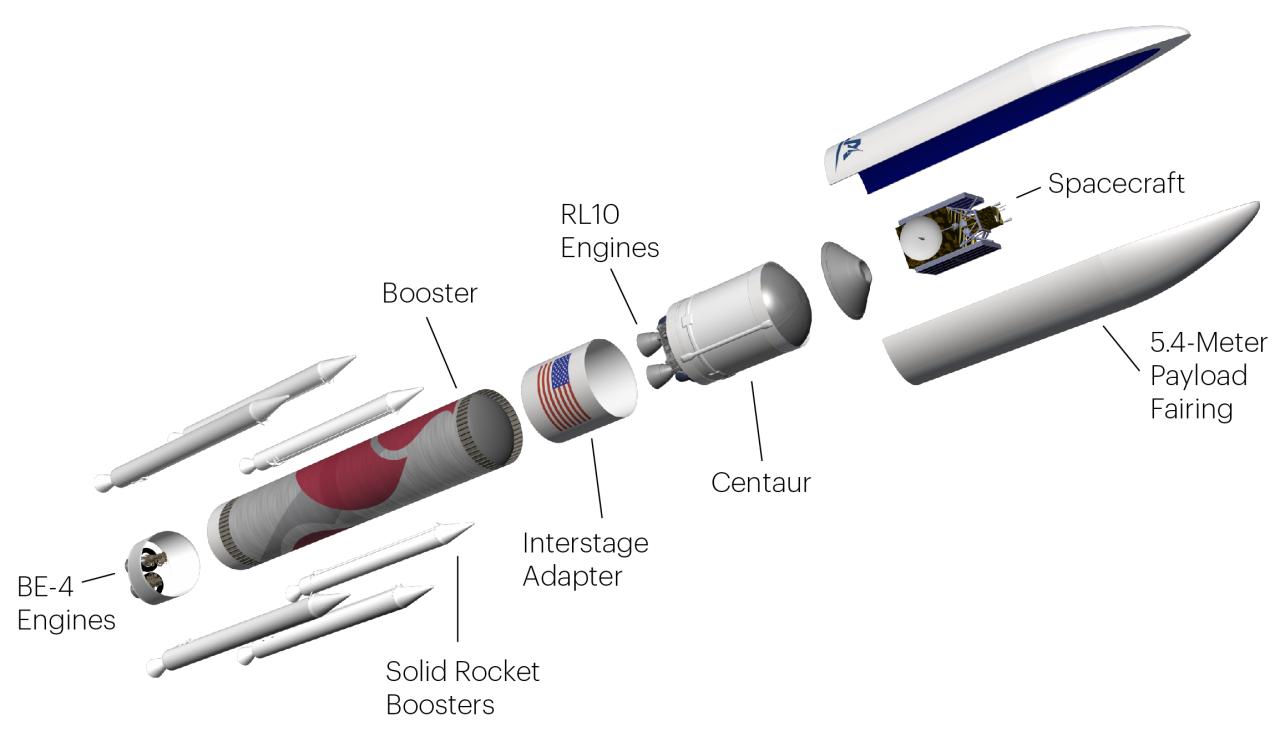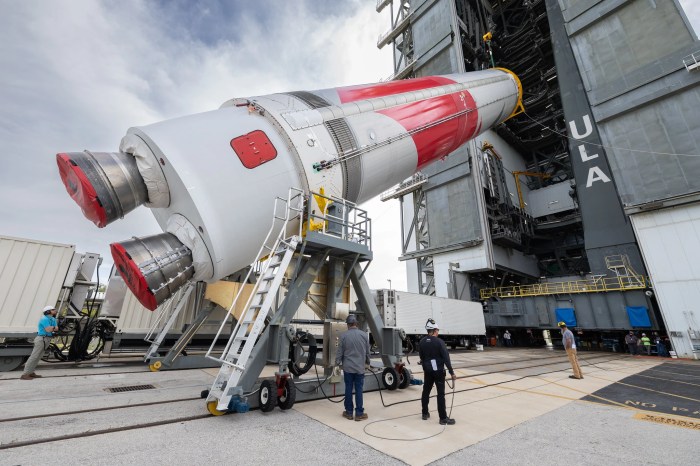Introduction to United Launch Alliance and the Vulcan Rocket
United Launch Alliance (ULA) is a joint venture between Boeing and Lockheed Martin, established in 2006 to provide reliable and cost-effective launch services for national security and commercial payloads. ULA has a long history of success, having launched over 150 missions since its inception. The company’s mission is to deliver the most reliable and cost-effective launch services for the nation’s critical space missions.
The Vulcan rocket is a significant addition to ULA’s portfolio, representing a new era for the company and its commitment to innovation. It is designed to replace the company’s existing Atlas V and Delta IV rockets, offering enhanced capabilities and cost efficiency.
Vulcan Rocket Design and Capabilities
The Vulcan rocket is a two-stage launch vehicle powered by a combination of liquid and solid rocket engines. It features a powerful first stage powered by two BE-4 engines, developed by Blue Origin, and a second stage powered by a single RL10 engine, a proven technology used in previous ULA rockets.
- The Vulcan rocket has a payload capacity of up to 63,500 pounds to low Earth orbit (LEO), exceeding the capabilities of its predecessors.
- It can also launch payloads to geostationary transfer orbit (GTO) and other destinations, including the Moon and Mars.
- The rocket is designed for high reliability, incorporating advanced technologies and robust systems to ensure mission success.
Key Features and Innovations of the Vulcan Rocket
The Vulcan rocket represents a significant leap forward in launch vehicle technology, incorporating numerous innovative features designed to enhance performance, reliability, and cost-effectiveness.
BE-4 Engine Propulsion
The Vulcan rocket’s primary propulsion system utilizes the powerful and efficient BE-4 engine, developed by Blue Origin. This engine boasts several key advantages, including:
- High Thrust: The BE-4 engine generates a substantial amount of thrust, enabling the Vulcan rocket to achieve impressive liftoff and ascent performance.
- Liquid Oxygen and Methane Fuel: The BE-4 engine utilizes a combination of liquid oxygen and methane as fuel. Methane offers several benefits, including higher energy density, lower cost, and environmentally friendly combustion properties.
- Reusable Design: The BE-4 engine is designed with reusability in mind, reducing the overall cost of space launches. This feature is crucial for making space exploration and commercial ventures more accessible and affordable.
Reusability Features
The Vulcan rocket incorporates advanced reusability features, aiming to reduce launch costs and increase mission frequency.
- First Stage Recovery: The Vulcan rocket’s first stage is designed to be reusable. After separating from the upper stage, it performs a controlled descent and lands vertically on a designated landing pad. This process significantly reduces the cost of launching payloads into space.
- Modular Design: The Vulcan rocket’s modular design allows for flexible payload configurations and efficient integration of different types of satellites and spacecraft. This adaptability enhances the rocket’s versatility and broadens its potential applications.
Impact of the Vulcan Rocket on the Space Industry
The Vulcan rocket, with its powerful capabilities and advanced design, is poised to have a significant impact on the space industry. Its versatility and reliability are expected to reshape the landscape of commercial space launches, bolster national security, and pave the way for exciting new possibilities in space exploration.
Commercial Space Launch Market
The Vulcan rocket is set to be a game-changer in the commercial space launch market, offering a reliable and cost-effective alternative for launching satellites and other payloads into orbit. Its large payload capacity and flexibility in launching a variety of missions will attract a diverse range of customers, including commercial satellite operators, government agencies, and research institutions. The Vulcan’s ability to launch multiple payloads on a single mission will also enhance its economic appeal, making it a more attractive option for cost-conscious customers.
National Security and Scientific Missions
The Vulcan rocket is expected to play a crucial role in supporting national security and scientific missions. Its robust design and advanced propulsion system make it ideal for launching sensitive payloads, such as reconnaissance satellites and military communication systems. Additionally, the Vulcan’s ability to carry large payloads will facilitate the launch of advanced scientific instruments and telescopes, enabling groundbreaking discoveries in fields such as astrophysics, planetary science, and Earth observation.
Future Space Exploration
The Vulcan rocket has the potential to revolutionize future space exploration endeavors. Its powerful engines and large payload capacity make it capable of launching deep-space missions, such as robotic probes to distant planets and asteroids. The Vulcan could also serve as a launch vehicle for human spaceflight missions, potentially facilitating the establishment of a lunar base or the exploration of Mars.
Comparison with Other Launch Vehicles
The Vulcan rocket competes in a dynamic and rapidly evolving space launch market. Understanding its strengths and weaknesses relative to other launch vehicles is crucial for evaluating its market potential and overall impact on the space industry.
Vulcan Rocket vs. Competitors
The Vulcan rocket faces competition from both existing and upcoming launch vehicles, each with its unique capabilities and target market. Here is a comparison of the Vulcan rocket with some of its key competitors, highlighting its strengths and weaknesses:
| Launch Vehicle | Payload Capacity (to LEO) | Launch Cost (estimated) | Engine Type | Key Features |
|---|---|---|---|---|
| Vulcan Centaur | 64,000 lbs (29,000 kg) | $120 million (estimated) | BE-4 (liquid oxygen and methane) | High payload capacity, reusability, and flexibility in payload configuration. |
| Falcon 9 | 22,800 lbs (10,350 kg) | $67 million (estimated) | Merlin (kerosene and liquid oxygen) | High flight rate, proven reliability, and reusability of the first stage. |
| Falcon Heavy | 140,600 lbs (63,800 kg) | $90 million (estimated) | Merlin (kerosene and liquid oxygen) | Heavy-lift capability, capable of launching large payloads to GEO. |
| New Glenn | 45,000 lbs (20,400 kg) | $100 million (estimated) | BE-4 (liquid oxygen and methane) | Fully reusable, designed for high flight rate and rapid turnaround times. |
| Ariane 6 | 22,000 lbs (10,000 kg) | $80 million (estimated) | Vinci (liquid hydrogen and liquid oxygen) | Reliable and well-established launch vehicle, offering a wide range of payload capabilities. |
The Vulcan rocket stands out with its high payload capacity, flexibility, and potential for reusability. It is also designed to be more environmentally friendly than some of its competitors, using methane-fueled engines that produce less emissions.
Vulcan Rocket’s Competitive Advantages
The Vulcan rocket offers several unique selling points that differentiate it from other launch vehicles:
- High Payload Capacity: With a payload capacity of 64,000 lbs to low Earth orbit (LEO), the Vulcan rocket can launch large and complex satellites, including those used for telecommunications, Earth observation, and scientific research.
- Flexibility: The Vulcan rocket is designed to be highly flexible, accommodating a wide range of payload configurations and launch trajectories. This flexibility makes it suitable for a variety of missions, including commercial, government, and scientific applications.
- Reusability: While not fully reusable in its initial configuration, the Vulcan rocket is designed for future upgrades that will enable reusability of the first stage. This will significantly reduce launch costs and increase the frequency of launches.
- Environmentally Friendly: The Vulcan rocket’s BE-4 engines use methane as fuel, which is a cleaner-burning fuel than kerosene. This makes the Vulcan rocket a more environmentally friendly option compared to some of its competitors.
The Vulcan rocket’s combination of high payload capacity, flexibility, reusability potential, and environmental friendliness positions it as a strong competitor in the space launch market. Its unique selling points and competitive advantages make it a viable option for a wide range of customers, including commercial satellite operators, government agencies, and research institutions.
Future Prospects and Development Plans for the Vulcan Rocket: United Launch Alliance Introduces New Vulcan Rocket
The Vulcan rocket is poised to play a significant role in the future of space exploration and commercial space activities. United Launch Alliance (ULA) has ambitious plans for the Vulcan, aiming to enhance its capabilities and expand its applications across diverse space missions.
Anticipated Launch Schedule and Potential Upgrades
ULA has a robust launch schedule for the Vulcan, with several missions planned in the coming years. The company is committed to maintaining a consistent launch cadence, ensuring the Vulcan remains a reliable and cost-effective option for its customers.
- The Vulcan is designed to be highly versatile, capable of launching a wide range of payloads, from small satellites to large spacecraft. This versatility allows ULA to cater to the diverse needs of its customers, including government agencies, commercial operators, and international partners.
- ULA is continuously exploring potential upgrades for the Vulcan, aiming to enhance its performance and capabilities. These upgrades could include improved engine designs, larger payload capacity, and enhanced launch flexibility.
The Vulcan Rocket’s Role in Emerging Space Industries
The Vulcan is well-suited to support emerging space industries, such as space tourism and asteroid mining.
- The Vulcan’s ability to launch large payloads makes it ideal for transporting tourists and equipment to orbital destinations. For example, the Vulcan could launch spacecraft capable of carrying passengers to space hotels or lunar outposts.
- Asteroid mining requires the ability to launch heavy payloads, such as mining equipment and processing facilities, to distant asteroids. The Vulcan’s powerful engine and large payload capacity make it a viable option for this type of mission.
The Vulcan Rocket’s Role in Advancing Human Space Exploration and Scientific Discovery, United launch alliance introduces new vulcan rocket
The Vulcan is expected to play a crucial role in advancing human space exploration and scientific discovery.
- The Vulcan could launch spacecraft carrying astronauts to the Moon, Mars, and other destinations in the solar system. The rocket’s reliability and performance make it a safe and efficient choice for human spaceflight missions.
- The Vulcan can launch scientific missions to study planets, stars, and galaxies. The rocket’s payload capacity allows it to carry large telescopes, probes, and other scientific instruments to distant locations.
United launch alliance introduces new vulcan rocket – The Vulcan rocket is poised to become a game-changer in the space industry, opening doors to unprecedented possibilities for exploration and scientific discovery. From launching satellites to supporting human spaceflight, the Vulcan rocket is set to play a crucial role in shaping the future of our journey beyond Earth. So buckle up, space enthusiasts, because the future of space exploration is taking off with the Vulcan rocket!
United Launch Alliance’s new Vulcan rocket is shaping up to be a game-changer in the space industry, boasting powerful engines and a sleek design. While we’re eagerly awaiting its launch, it seems like we’ll have to wait a bit longer for another exciting release – Uncharted 4: A Thief’s End has been pushed back to 2016. But hey, at least we can rest assured that both the Vulcan rocket and Nathan Drake’s final adventure will be worth the wait!
 Standi Techno News
Standi Techno News

